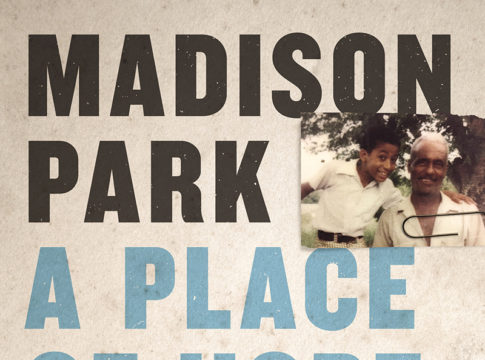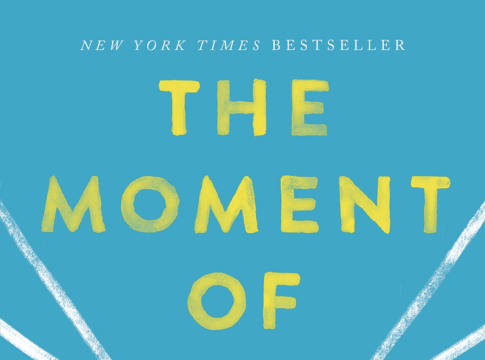Educating School Teachers.
Arthur Levine (The Education Schools Project).
In this 140-page report, the former president of Teachers College, Columbia University, seeks to do for teachers what his 2005 report did for administrators: appraise the current state of their professional preparation and suggest needed reforms. The news is mostly glum: “Teacher education in the U.S. is principally a mix of poor and mediocre programs.” OK, that’s not news, but having Levine join the reform chorus is healthy. But how to rectify the situation? Levine makes five big policy recommendations. Most are sensible enough, but it’s hard to get around the fact that neither he nor anyone else knows exactly how best to prepare future teachers and what they most need to learn. Also troubling: Levine is too close to his own industry to ask such fundamental questions as why the costly, cumbersome “paper credentialing” process that he seeks to reform is worth keeping at all, considering the plentiful evidence that uncredentialed teachers (from Teach For America, etc.) do just fine. Despite such flaws, this report is a devastating indictment of teacher education as we know it and of the institutional mechanisms (e.g., NCATE accreditation) that purport to exert quality control today.
No Child Left Behind and the Transformation of Federal Education Policy, 1965–2005.
Patrick J. McGuinn (University of Kansas Press).
School’s In: Federalism and the National Education Agenda.
Paul Manna (Georgetown University Press).
Politics, Ideology, and Education: Federal Policy During the Clinton and Bush Administrations.
Elizabeth H. DeBray (Teachers College Press).
Policymakers, reformers, and educators have all remarked on the strange bedfellows who came together to craft No Child Left Behind—and much ink has been spilled musing on the significance and implications of their efforts. Now, just in time for the law’s scheduled reauthorization, three young political scientists offer the first book-length scholarly treatments of its origins.
McGuinn takes a historical approach, showing how the growing salience of education in national politics and mounting public frustration with previous federal efforts led Republicans and Democrats in Washington, D.C., to converge on a new reform agenda centered on standards and accountability. Although he concedes that the initial implementation of NCLB has been “difficult,” McGuinn argues that media accounts of a nascent grass-roots backlash against the law ignore the durability of the coalition responsible for its enactment.
Manna emphasizes the law’s roots in state reform efforts and the feds’ continued reliance on the states’ administrative capacities to achieve their goals. We should hardly be surprised, he suggests, that states have exploited the law’s most gaping loophole by setting low targets for student performance and have aggressively lobbied for still greater flexibility.
DeBray’s is the most narrowly focused account, asking why congressional gridlock during the final two years of the Clinton presidency gave way to progress in 2001. Whereas Clinton faced a GOP-dominated Congress, she argues, George W. Bush was able to bring his party’s conservative wing into the fold. Despite its bipartisan support, therefore, the timing of NCLB’s passage paradoxically confirms the current importance of partisanship on Capitol Hill. DeBray is also the most skeptical of the law’s substance, asserting that the recent politicization of education policy has limited the presumably benign influence of researchers and practitioners.
Taken together, the books clearly demonstrate the value to political scientists of serious inquiry into the long-neglected field of education politics. For all their insights, however, the authors’ reluctance to delve into the evidence on the effectiveness of alternative reform strategies leads them to ignore what are perhaps the key questions concerning the enactment of NCLB: Was the price of bipartisanship and federalism the enactment of a law that is long on aspirations but lacking in the means necessary to achieve them? If so, was the price worth paying?
School Sector and Student Outcomes.
Edited by Maureen T. Hallinan (University of Notre Dame Press).
This volume offers a scholarly look at the differences across public, private nonreligious, and private religious schools without rendering any summary findings or conclusions. The chapters generally rely on theoretical analyses, case studies, or other methods that cannot control for selection effects—ensuring that none of the findings are likely to change the minds of partisans or offer much succor to policymakers. The book’s grab bag of essays explores how parental involvement, ability grouping, psychological well-being, and teachers’ assessments of student effort and ability vary across sectors. There are also chapters that provide an “organizational analysis” of Toronto’s private schools and a look at “cultural capital” in Chicago’s Jewish schools. William Carbonaro’s chapter on sectoral learning examines how much students learn during the school year and the summer. He makes a provocative case that sectoral effects vary by grade level and that different summer achievement gains of students in public and private schools are confounding comparisons of achievement across sectors. This is a volume whose greatest appeal will probably be to graduate students seeking out new research ideas.
Building Blocks: Making Children Successful in the Early Years of School.
Gene I. Maeroff (Palgrave Macmillan).
While there is growing interest in making preschool universal, and the nation is slowly moving in the direction of full-day kindergarten for all, Gene Maeroff, the founding director of the Hechinger Institute on Education and the Media at Teachers College, urges parents and policymakers to embrace a more comprehensive strategy for improving early education. The central component of Maeroff’s proposal is the creation of pre-K to grade 3 schools (or pre-K–3 academies within traditional elementary schools), which will allow teachers to plan across grade levels and to participate in joint staff development, among other things. Maeroff presents an impressive collection of examples of schools and other groups doing early education well, in some cases in a pre-K–3 setting, but more often not. Inspiring though the examples are, they may not persuade a skeptical reader that the best way to improve early education for all is to harness it to the existing (if reorganized) K–12 system.
Innocents Abroad: American Teachers in the American Century.
Jonathan Zimmerman (Harvard University Press).
This charming history of the missionaries, Peace Corps volunteers, and other idealists who taught in the four corners of the world over the past 100 years is billed by the author and publisher as an examination of our shifting understanding of “culture.” Whereas teachers in the early parts of the 20th century journeyed overseas brimming with confidence in American mores and values, ready to foist them upon “backwards” peoples, by midcentury their heirs identified the United States as the regressive force, celebrating everything indigenous as superior. (Of course, neither view was correct.)
For readers interested in education, though, it offers an even more delicious treat: countless scenes of progressive teachers thwarted in their efforts to export dubious ideas (antipathy to “book learning,” enthusiasm for “practical” education, obsession with “learning by doing”). Zimmerman explains: “From Chile and Colombia to China and India, people pleaded with American teachers to provide instruction in academic disciplines—especially math, science, and English—rather than the vocational subjects that the teachers often favored.” What a great example of what Americans stand to learn from the rest of the world.
How to Handle Difficult Parents: A Teacher’s Survival Guide.
Suzanne Capek Tingley (Cottonwood Press).
Suzanne Capek Tingley, a current superintendent and former principal and teacher, has written a comprehensive and playful—if sometimes repetitive—handbook for teachers who are struggling with their parent relations. Her departure point is the appropriately titled chapter “A Short and Subjective History of Parents,” in which she describes the gradual degrading of the parent-teacher relationship. Tingley places the blame both on parents, who pamper their kids too much, and on schools, which emphasize student self-esteem at the expense of student competition and real accomplishment.
Tingley dispenses specific advice for how to deal with some common types of the modern parent, such as “The Uncivil Libertarian,” “The Intimidator,” and “The Caped Crusader.” Each chapter is centered on hypothetical, often amusing conversations that might transpire between the offending parent and an unfortunate teacher. If you’re a teacher who develops a nervous tic ahead of parent-teacher conferences, this could be the book for you.
Critical Lessons: What Our Schools Should Teach.
Nel Noddings (Cambridge University Press).
Nel Noddings, professor emerita at Stanford University and past president of the National Academy of Education, has devoted her latest tome to the daring proposition that critical thinking should be encouraged in high schools and that this requires students to discuss contentious topics. The author of volumes such as Happiness and Education and The Challenge to Care in Schools once again displays a willingness to wade fearlessly into a field of dandelions. Noddings may raise some eyebrows, however, with the “contentious” topics she would like debated. She wants schools to make students who are considering military service aware that “combat sometimes induces the loss of moral identity,” wants them to challenge students to wonder “Does it lift my spirit to see the sunrise, or is waking at such an hour unthinkable?” and wants students to ask, “How do we achieve a desirable balance between our roles as citizen and consumer?” Noddings chides that “both tree huggers and tree slashers must think more deeply” and argues that “students should learn enough natural history to enable them” to craft “aesthetically pleasing alternatives to lawns.” The book offers 300 pages of vapid, frequently aimless education musings that bring to mind too many popular works on teaching and curricula. Is it too much to hope that irate readers might spark a contentious debate about that?




